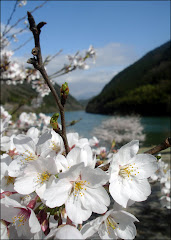 Ichimame enjoying the plum blossoms of Kitano Tenmangu shrine, in full bloom just in time for the Plum Festival (Baikasai) thanks to the unusually warm weather.
Ichimame enjoying the plum blossoms of Kitano Tenmangu shrine, in full bloom just in time for the Plum Festival (Baikasai) thanks to the unusually warm weather.If you are a geisha enthusiast like myself, chances are you already know Ichimame, the beautiful young maiko blogging away from her okiya in Kamishichiken, Kyoto's oldest and most traditional hanamachi (literally 'flower town', where geisha live and entertain). I first saw Ichimame perform last spring, when a wonderful series of unforeseeable events resulted in a free front row seat to Kitano Odori (the spring dance of Kamishichiken), convieniently positioned directly infront of her. At the end of the show, she smiled down at me, tossing one of her signed handkerchieves into my lap.
When I first discovered Ichimame's blog, I was so excited I wanted to post a link to it here. Being written completely in the Kyoto dialect of Japanese, I figured very few people would be able to read it and so decided against it. Thanks to the incredible number of visitors her site has been recieving from all around the world, she has begun a professionally translated English version of the blog, although it seems to be slow going. I wish I could volunteer to do it for her! I'd have that smack updated post haste! Until they get caught up, I'll post my own translation of the most recent entries here:
Starting tomorrow! Must sleep...


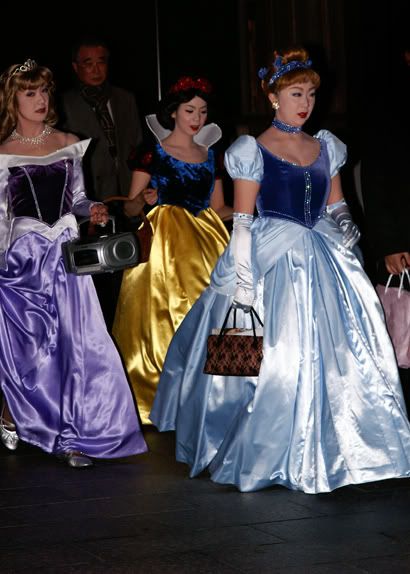



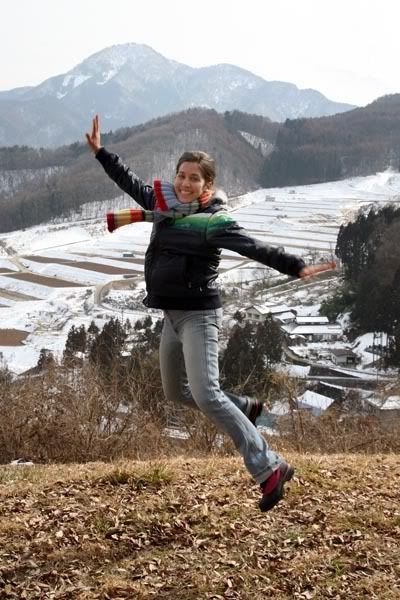
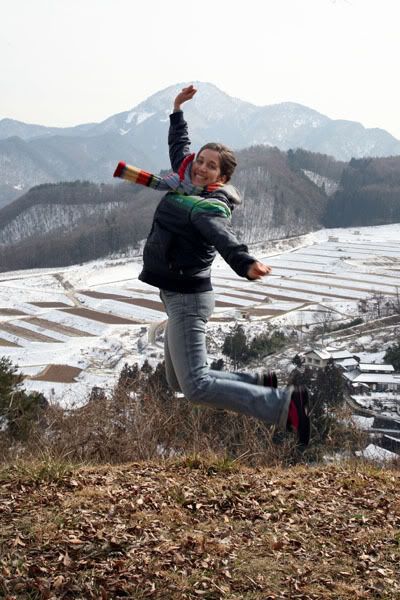
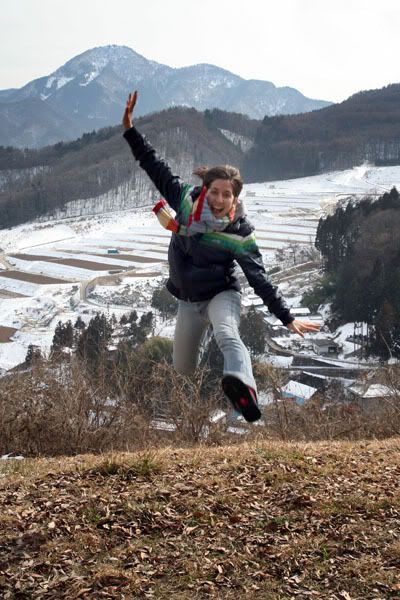





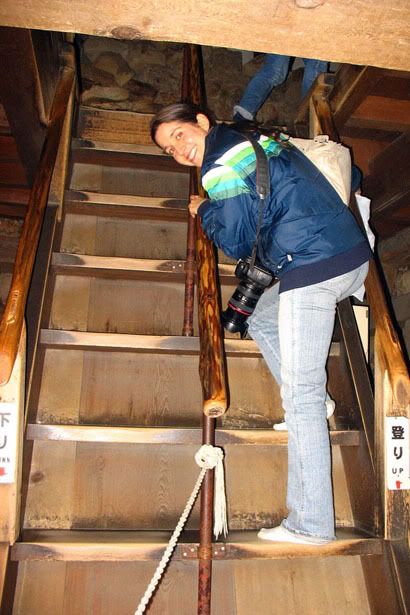
 Gifu: A River Runs Through It. The Kiso River, that is. From the wrap-around balcony of the main tower, you can see it cut gracefully through the concrete covered plain as it makes its way to Ena (as seen in the picture of my beautiful mountain school: top right, under the page header).
Gifu: A River Runs Through It. The Kiso River, that is. From the wrap-around balcony of the main tower, you can see it cut gracefully through the concrete covered plain as it makes its way to Ena (as seen in the picture of my beautiful mountain school: top right, under the page header). Abbey Sensei braces herself for the brutal winds from atop the tower. Fly away Abbey! Be free!
Abbey Sensei braces herself for the brutal winds from atop the tower. Fly away Abbey! Be free!  Brilliant red torii (shinto's spiritual gateways) and crimson banners line the entrance to a small inari shrine at the foot of the castle.
Brilliant red torii (shinto's spiritual gateways) and crimson banners line the entrance to a small inari shrine at the foot of the castle. 
 Happy Chinese New Year everyone! Inoshishi: The Wild boar.
Happy Chinese New Year everyone! Inoshishi: The Wild boar. Meet two of Gion`s newest, soon-to-be Maiko. They are minarai ( 見習い ), apprentice maiko who have graduated from their study as a shikomi, the first step in becoming a maiko.Minarai means to watch and learn, and that is exactly what they do: they begin to dress and become accustomed to the full, formal regalia and make-up of the maiko, accompany their big sisters to ozashiki (banquets and parties where geiko entertain), watch, and learn, preparing them for their debut as maiko, when they will begin to entertain customers. It is during this time that their professional name will be decided, and announced at their debut.
Meet two of Gion`s newest, soon-to-be Maiko. They are minarai ( 見習い ), apprentice maiko who have graduated from their study as a shikomi, the first step in becoming a maiko.Minarai means to watch and learn, and that is exactly what they do: they begin to dress and become accustomed to the full, formal regalia and make-up of the maiko, accompany their big sisters to ozashiki (banquets and parties where geiko entertain), watch, and learn, preparing them for their debut as maiko, when they will begin to entertain customers. It is during this time that their professional name will be decided, and announced at their debut.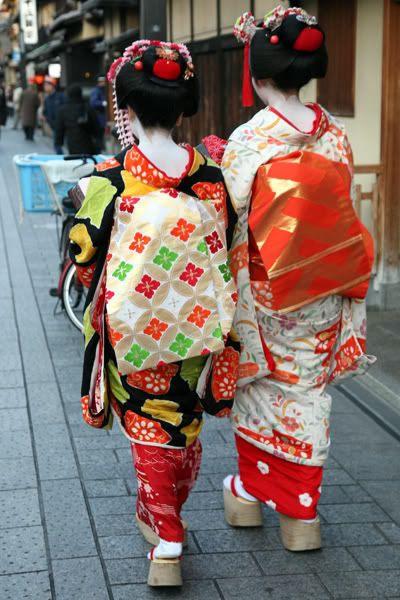
 The long, trailing darari obi exclusive to Kyoto's maiko. The sight of a maiko's magnificent dangling obi swaying as she walks is supposedly one of the famous sights of Kyoto.
The long, trailing darari obi exclusive to Kyoto's maiko. The sight of a maiko's magnificent dangling obi swaying as she walks is supposedly one of the famous sights of Kyoto.





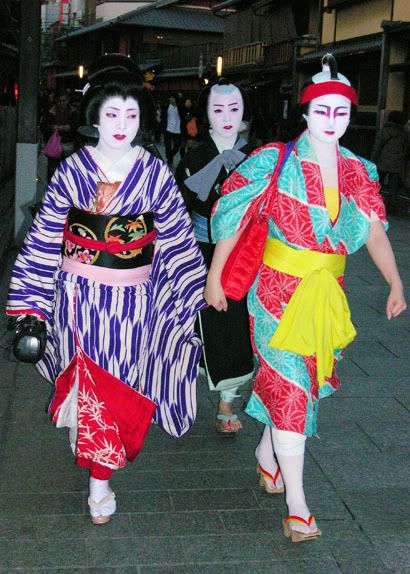
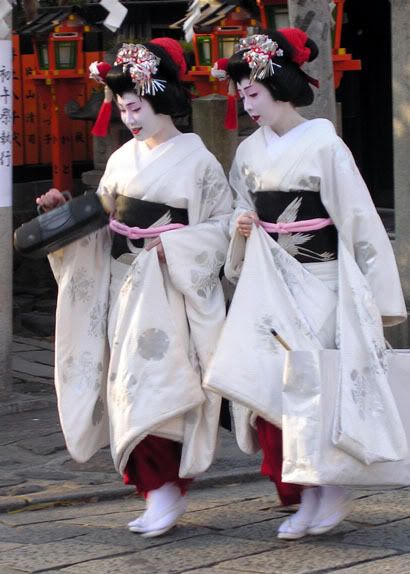




 Mission Mamemaki accomplished! The girls make their exit.
Mission Mamemaki accomplished! The girls make their exit.
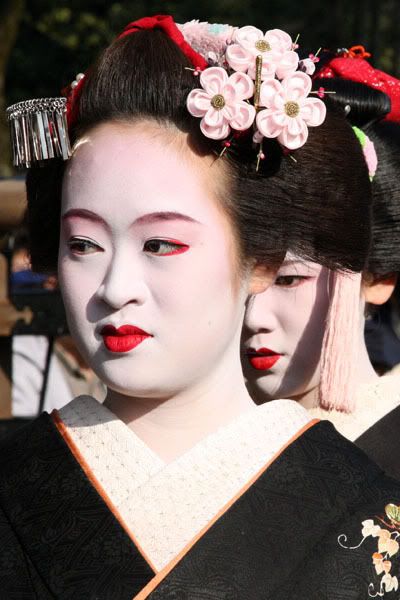




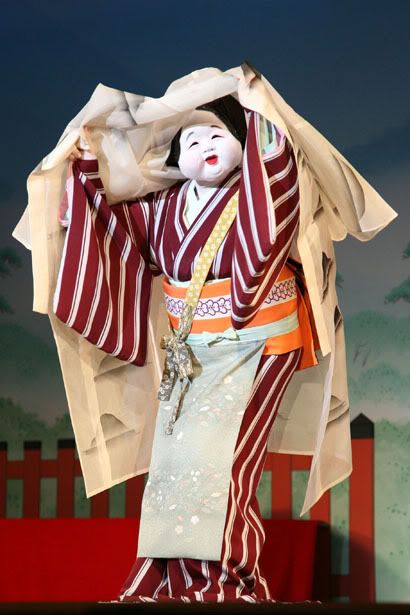
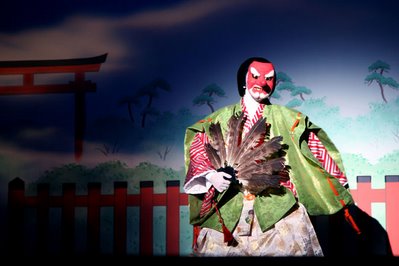 A long-nose oni (goblin, devil) mask.
A long-nose oni (goblin, devil) mask.
